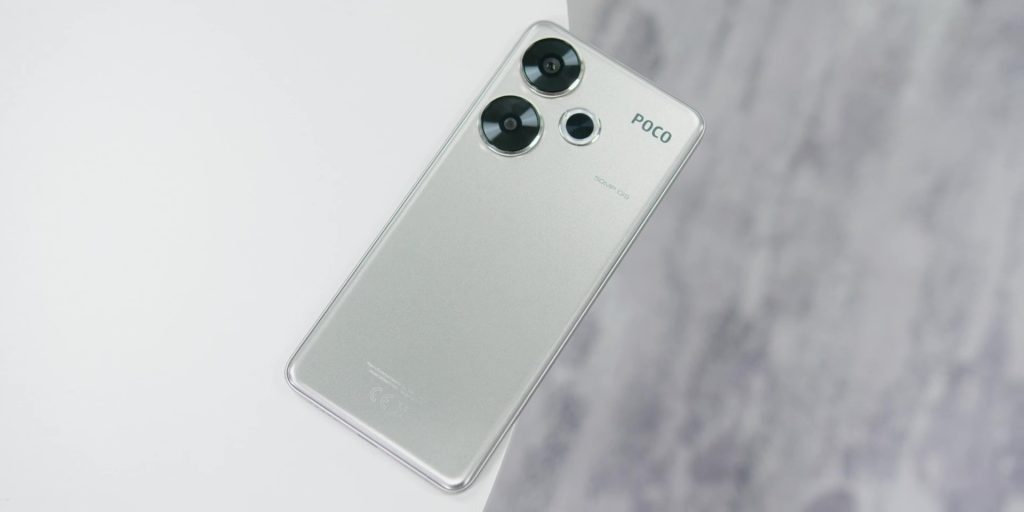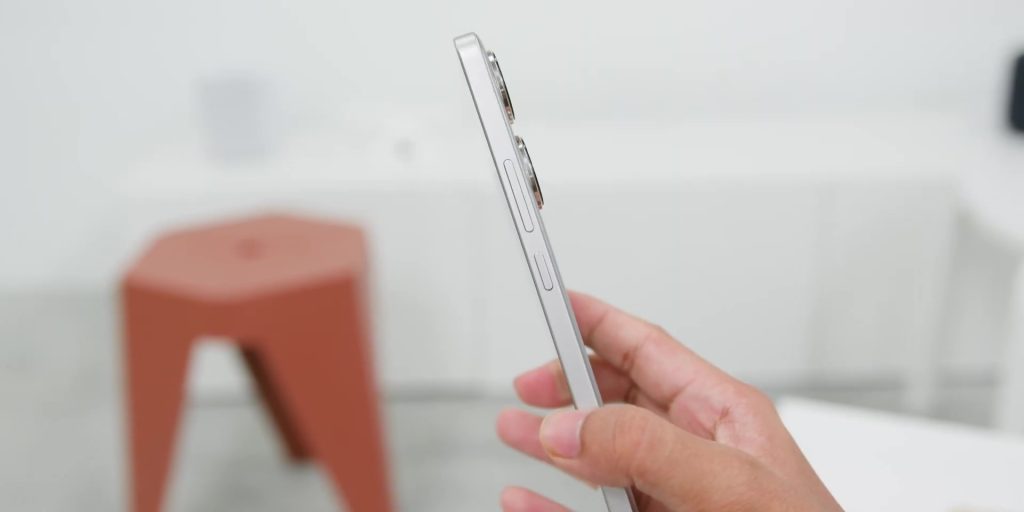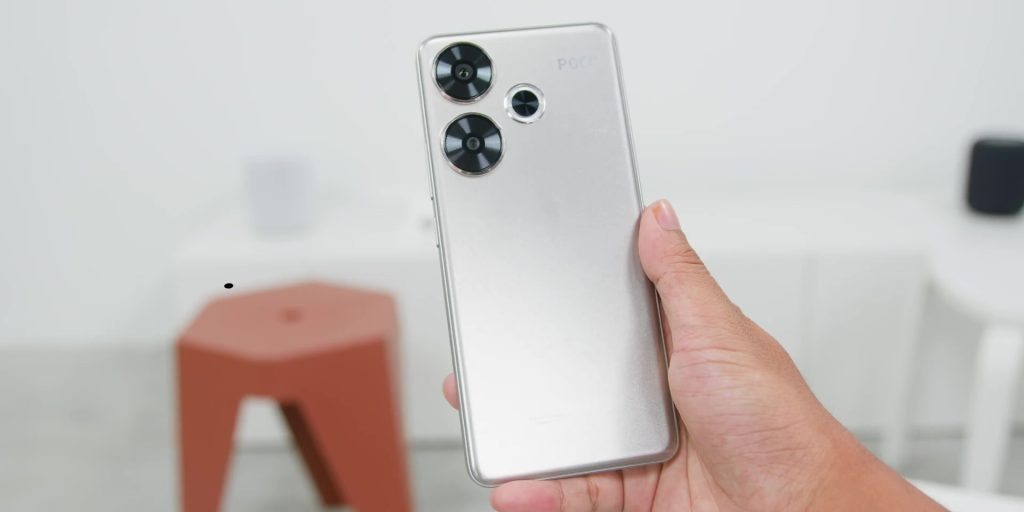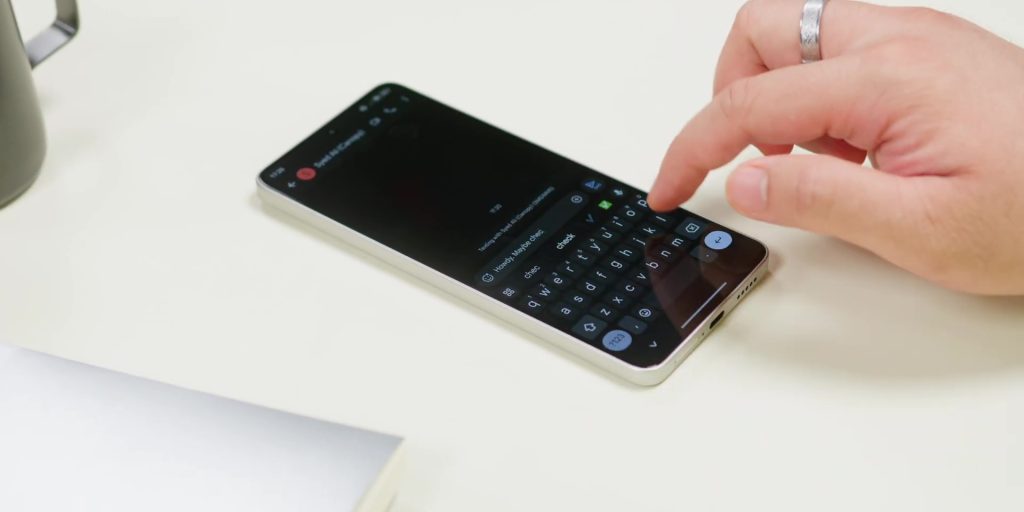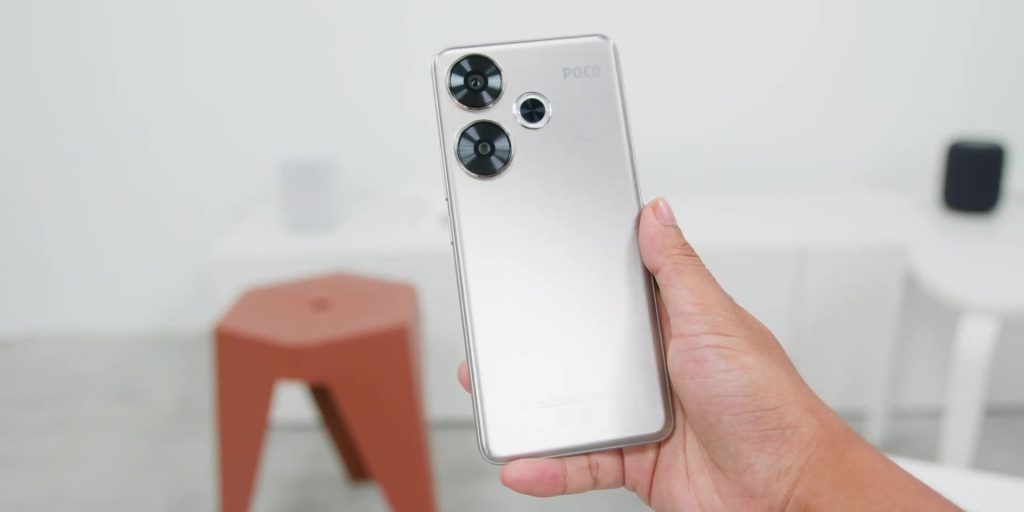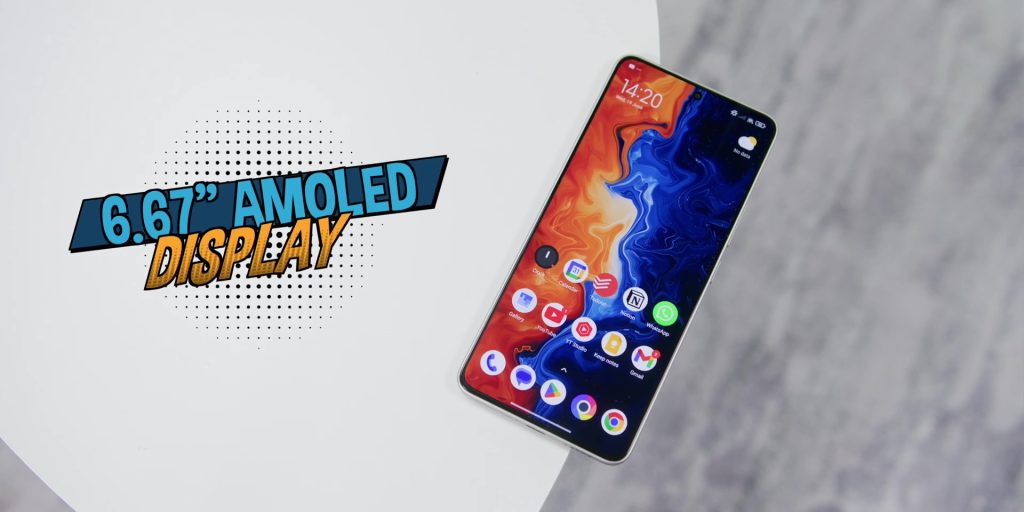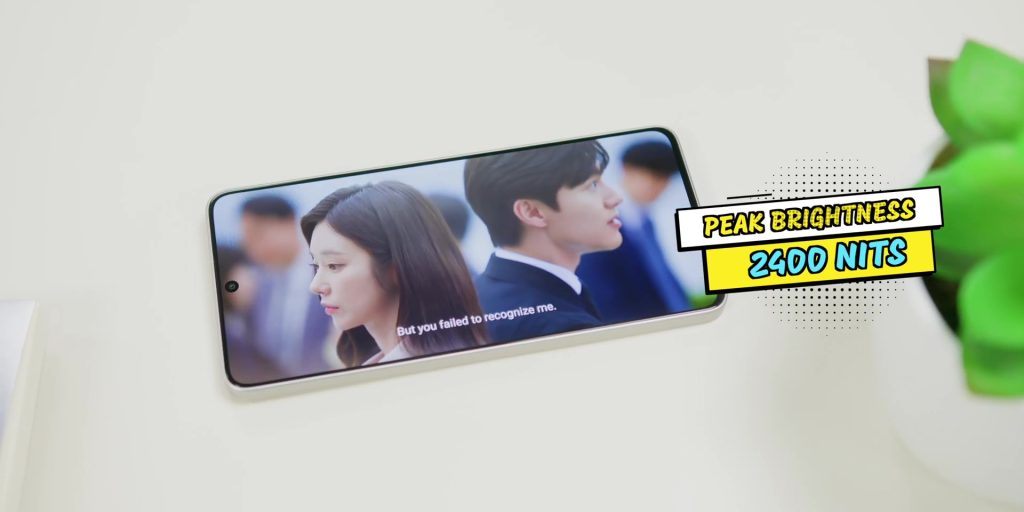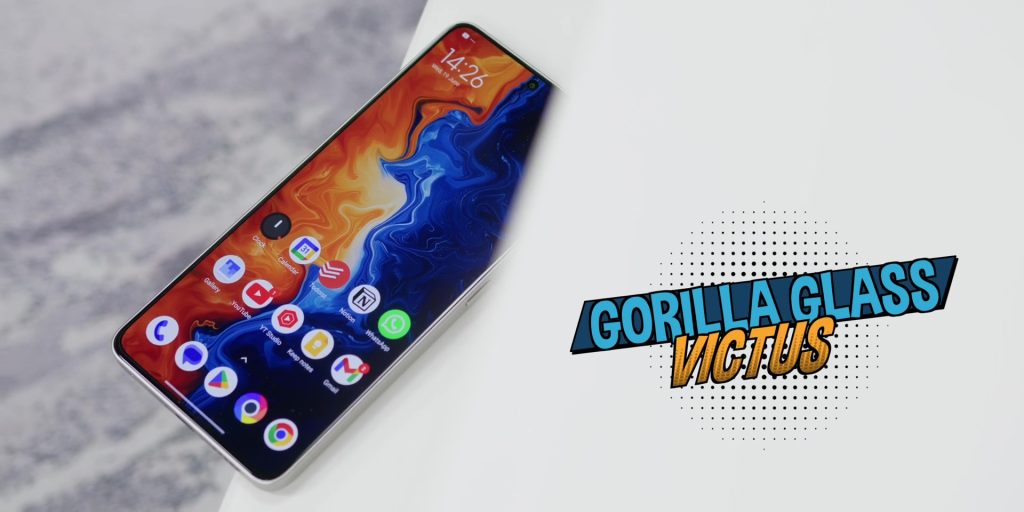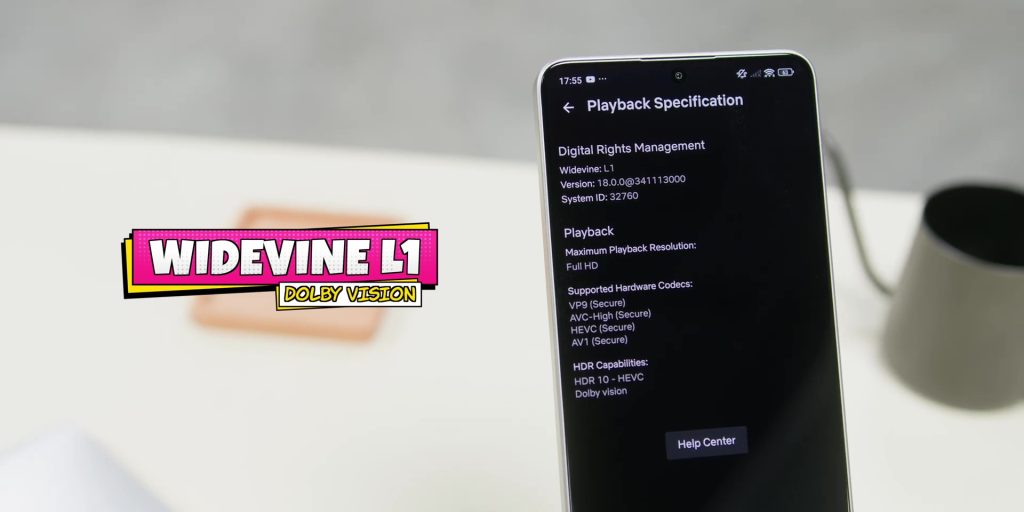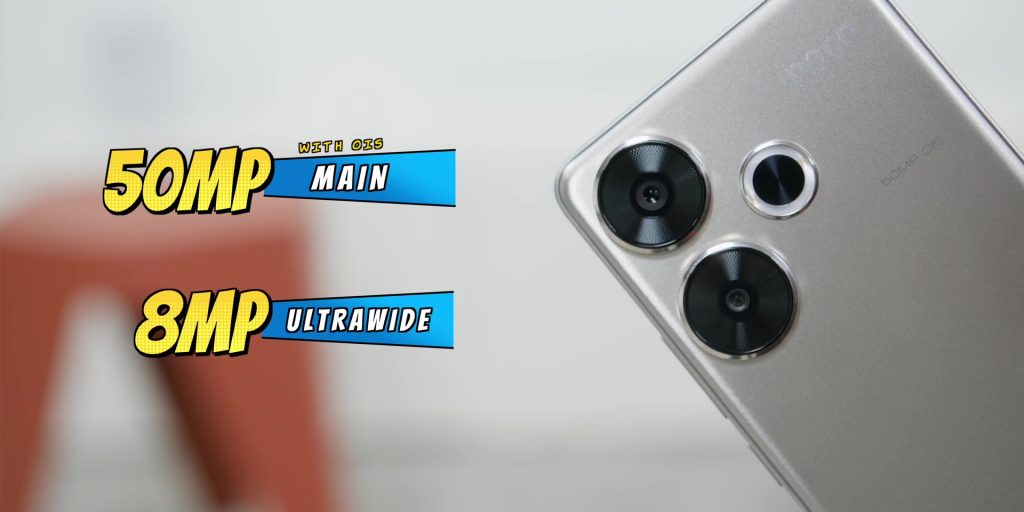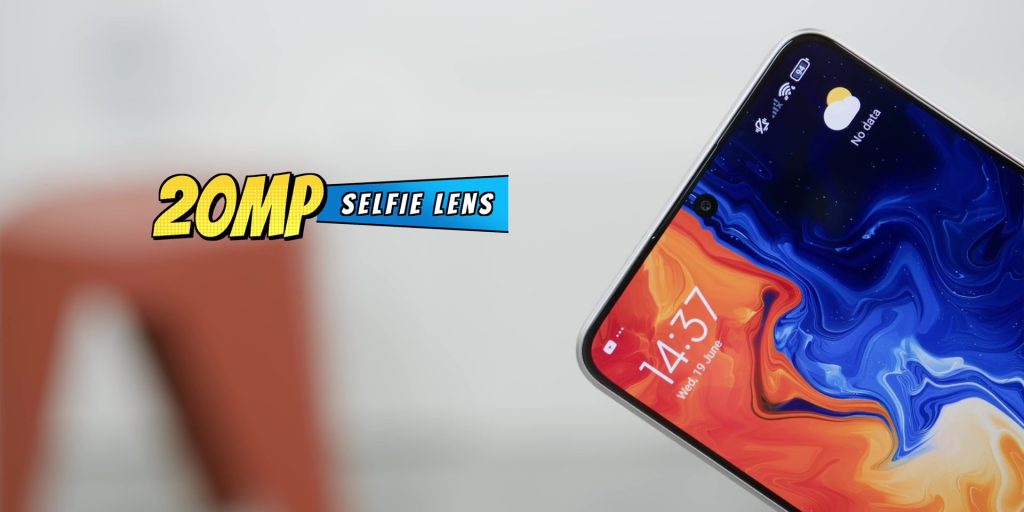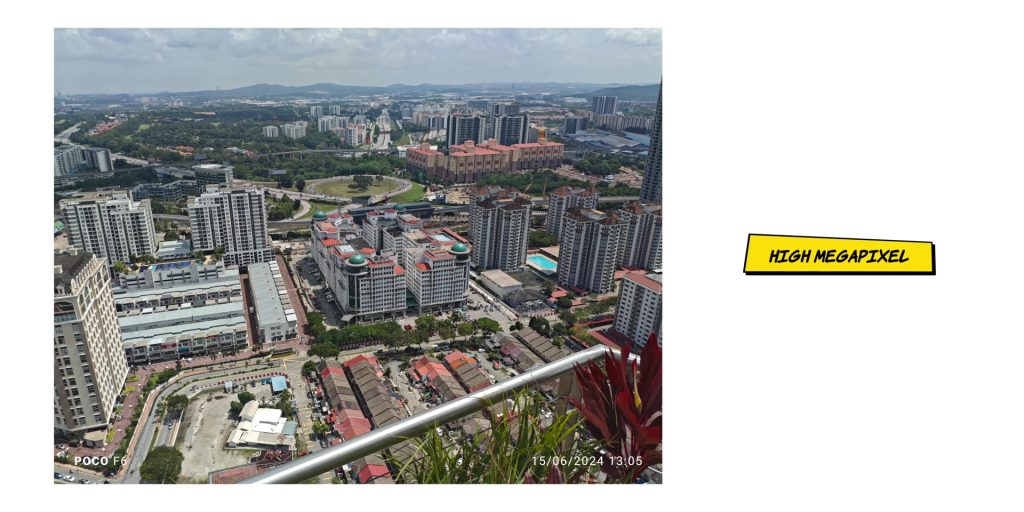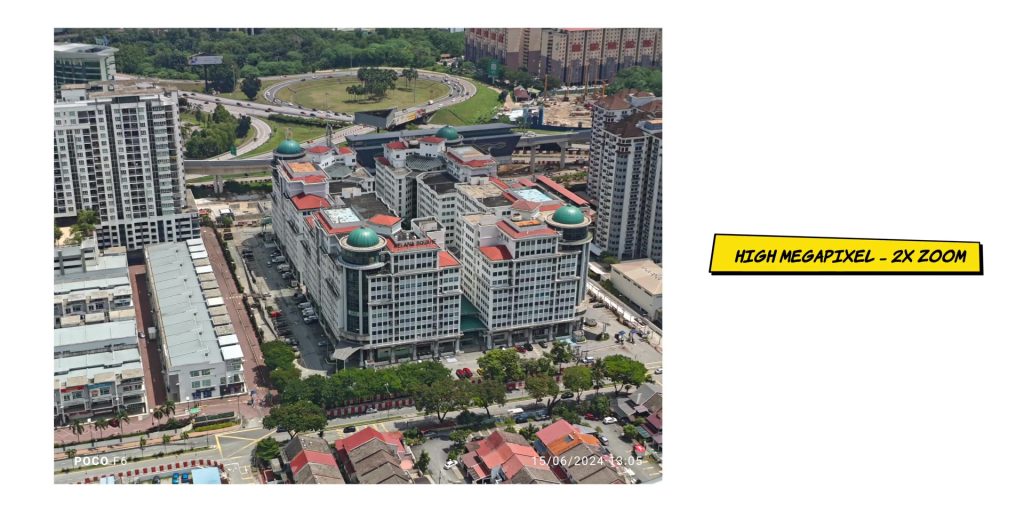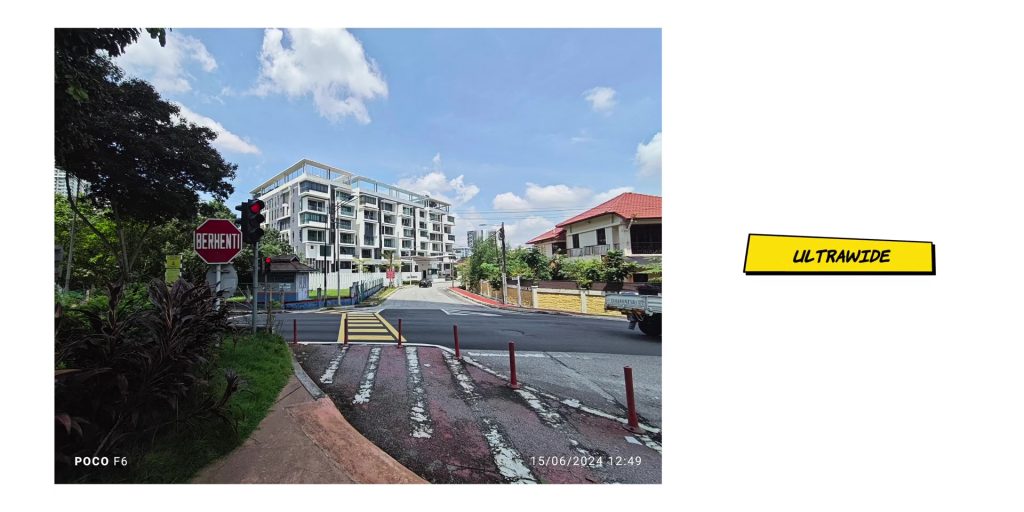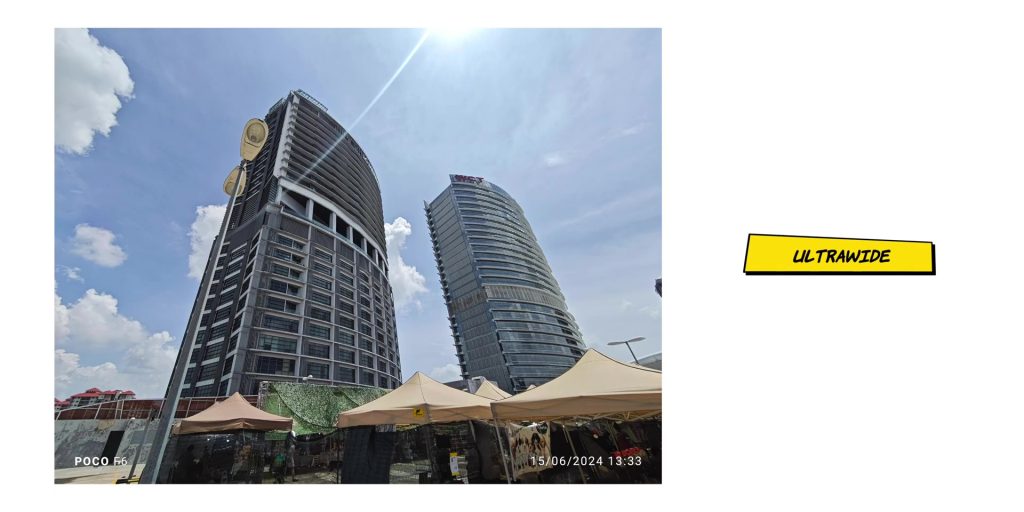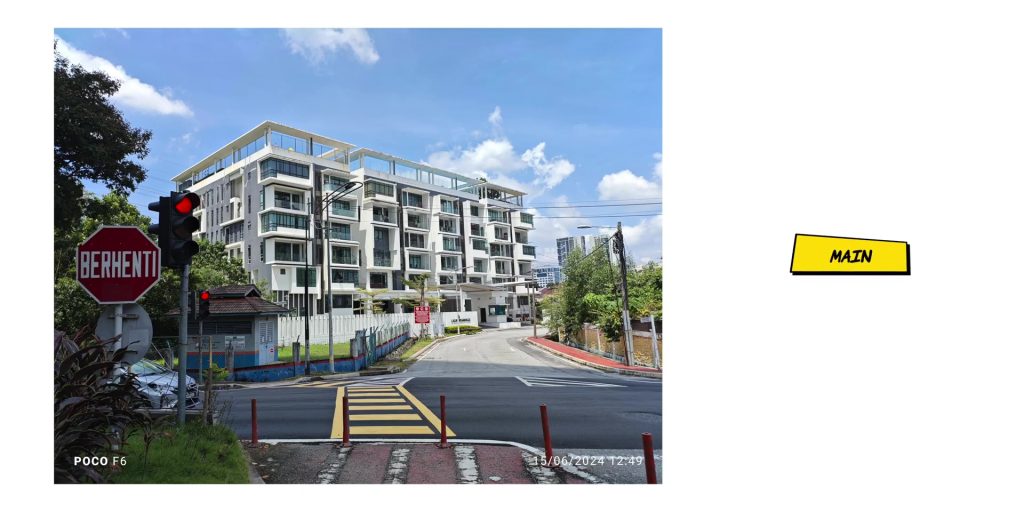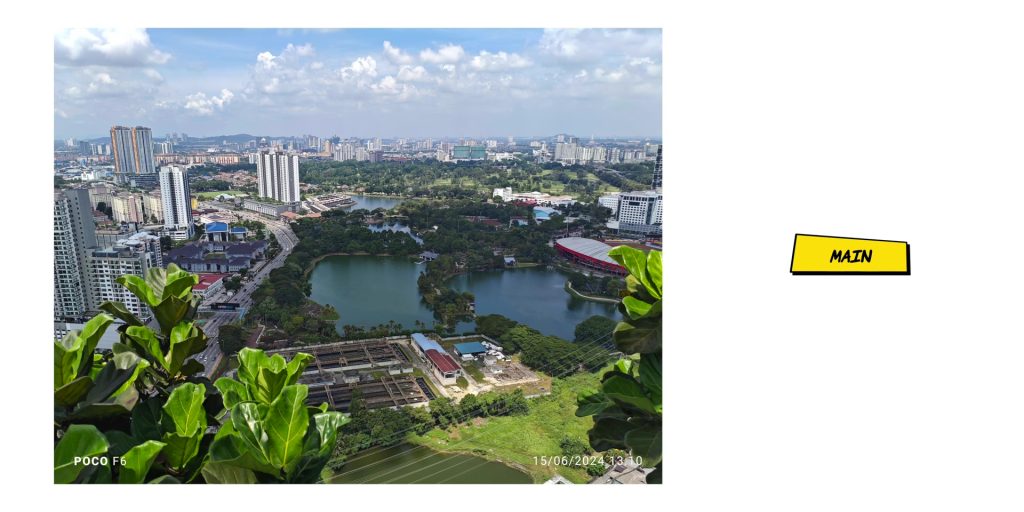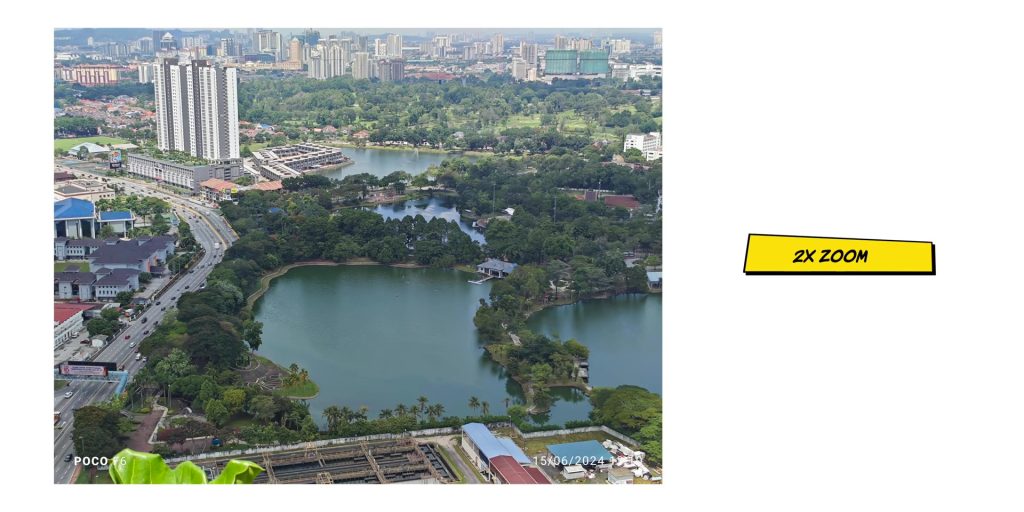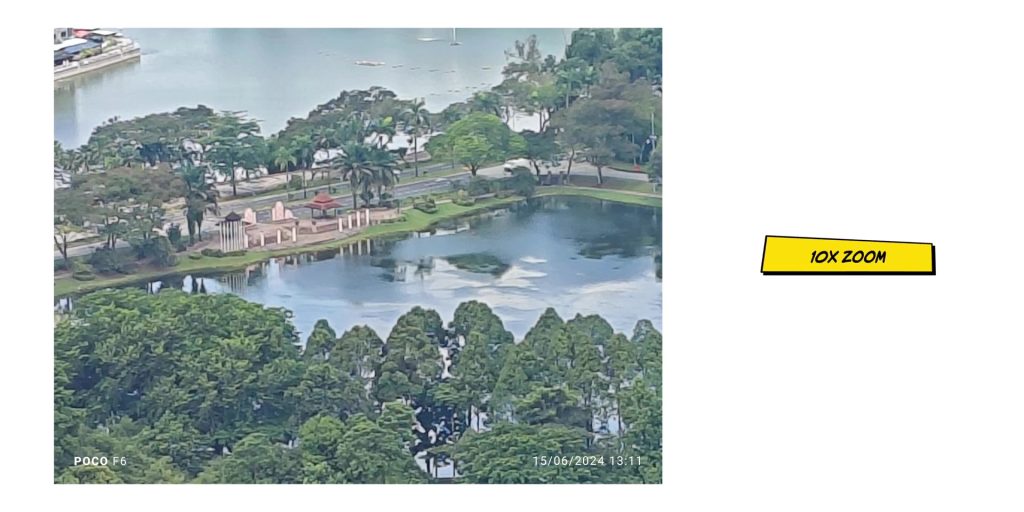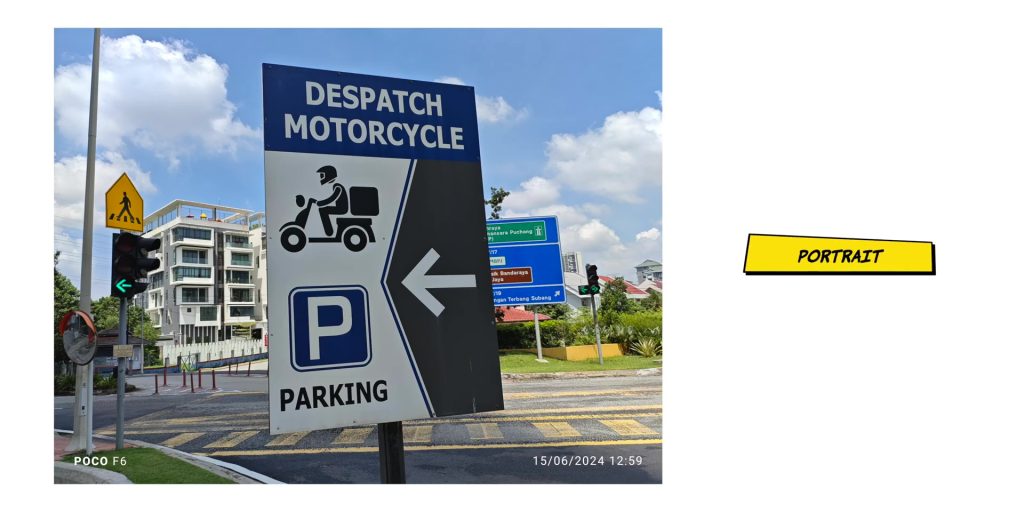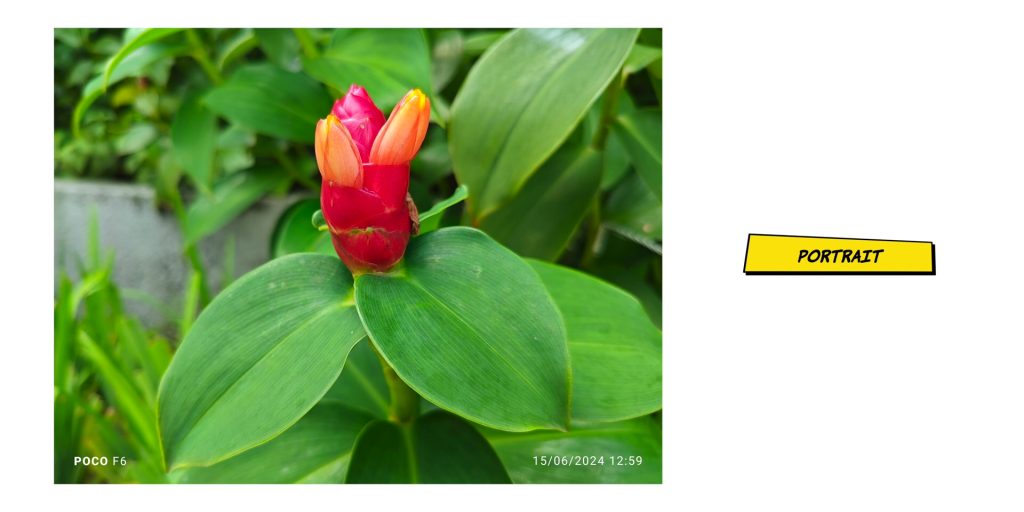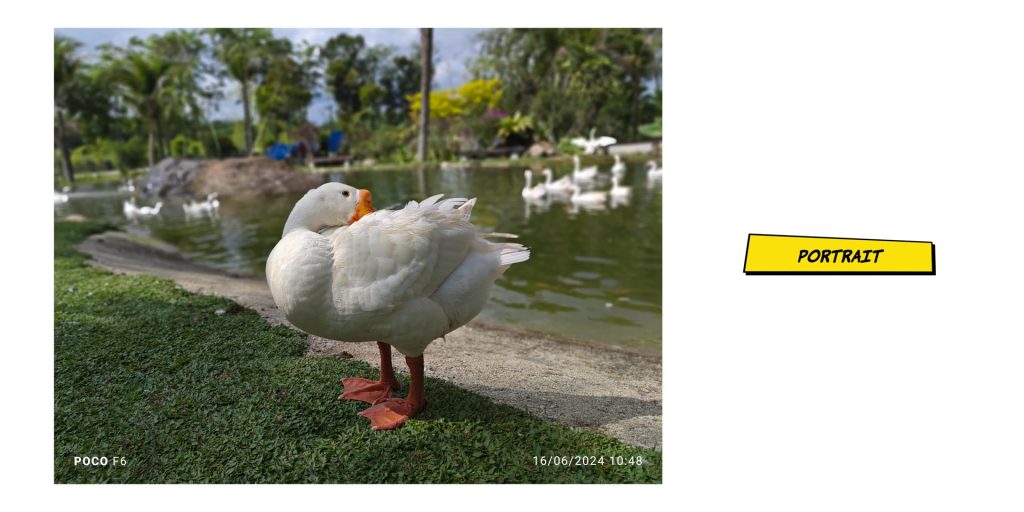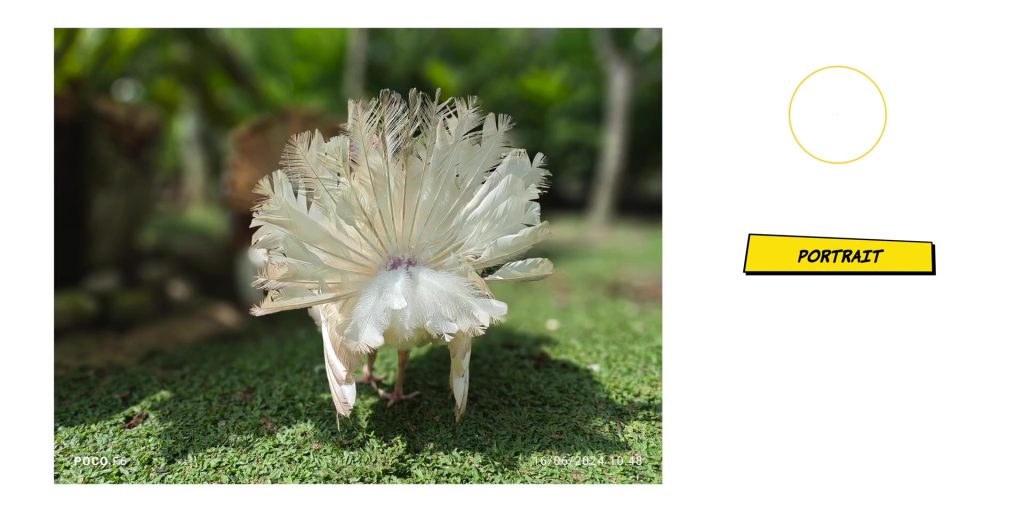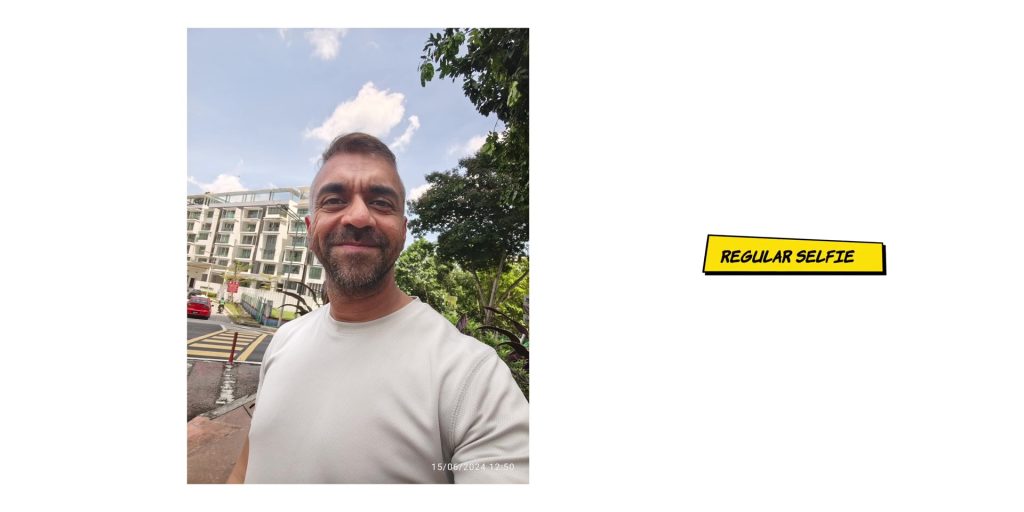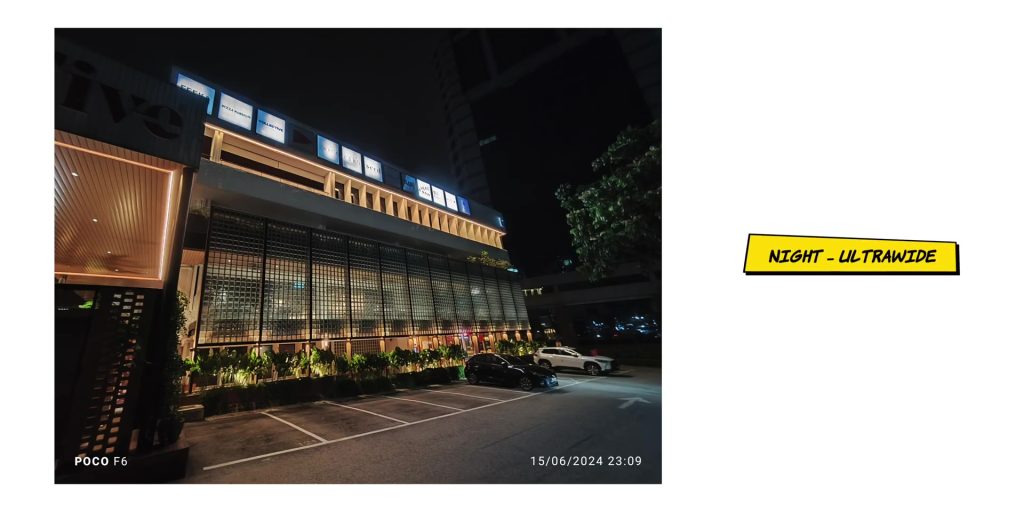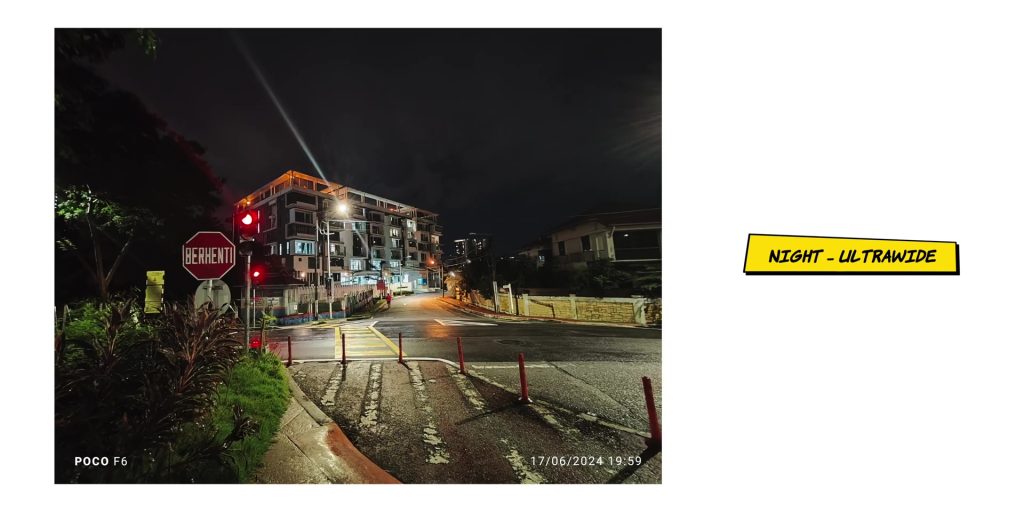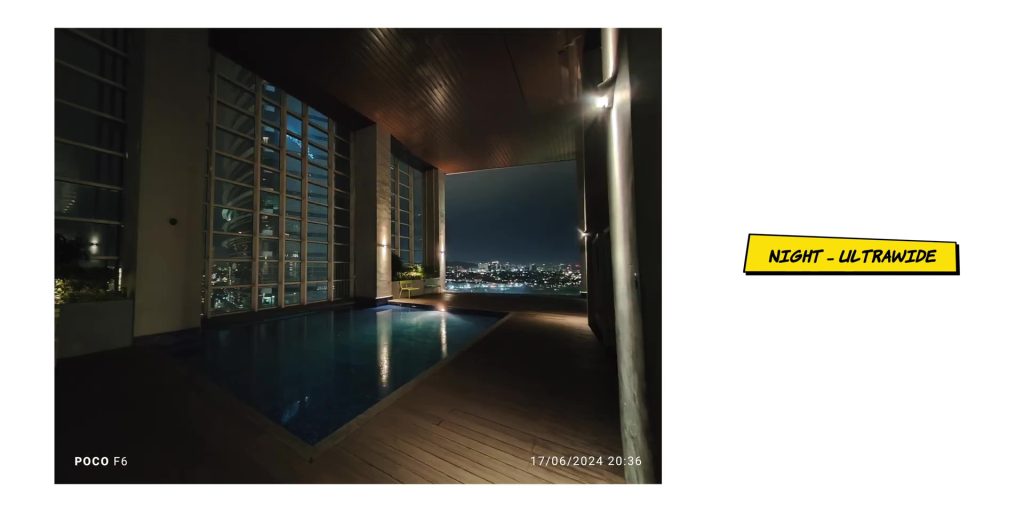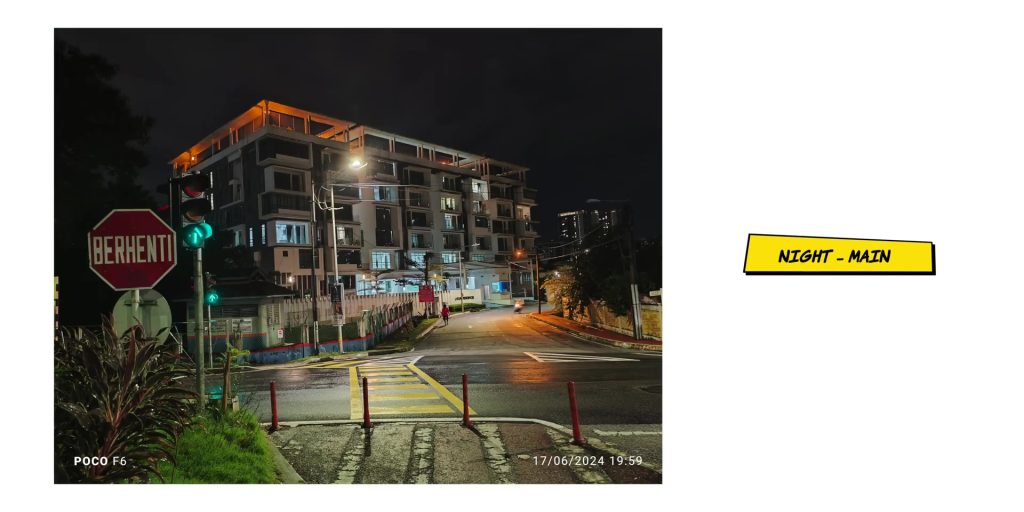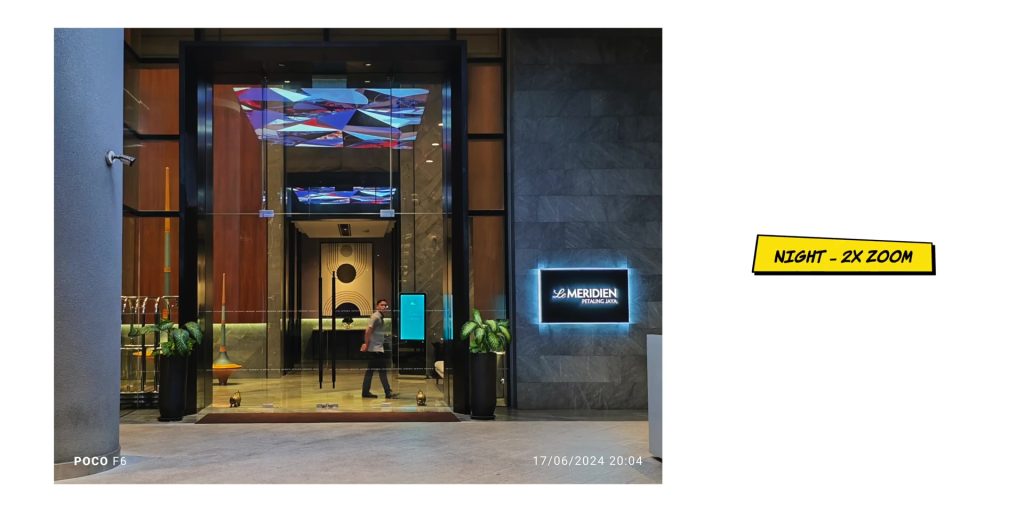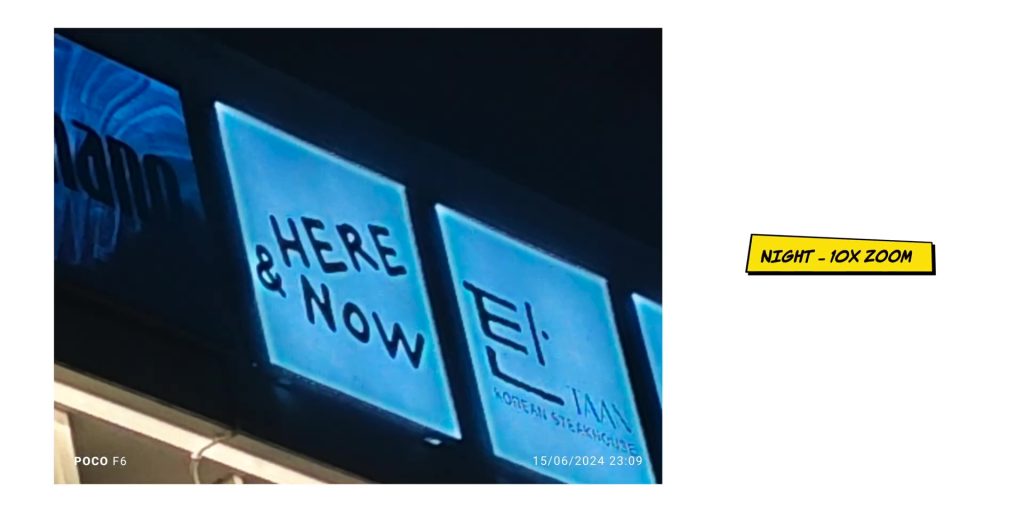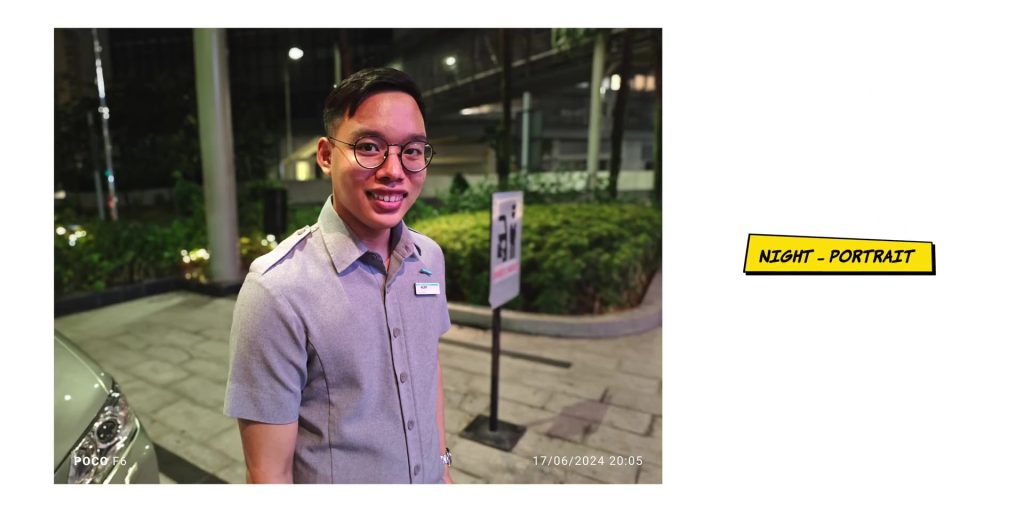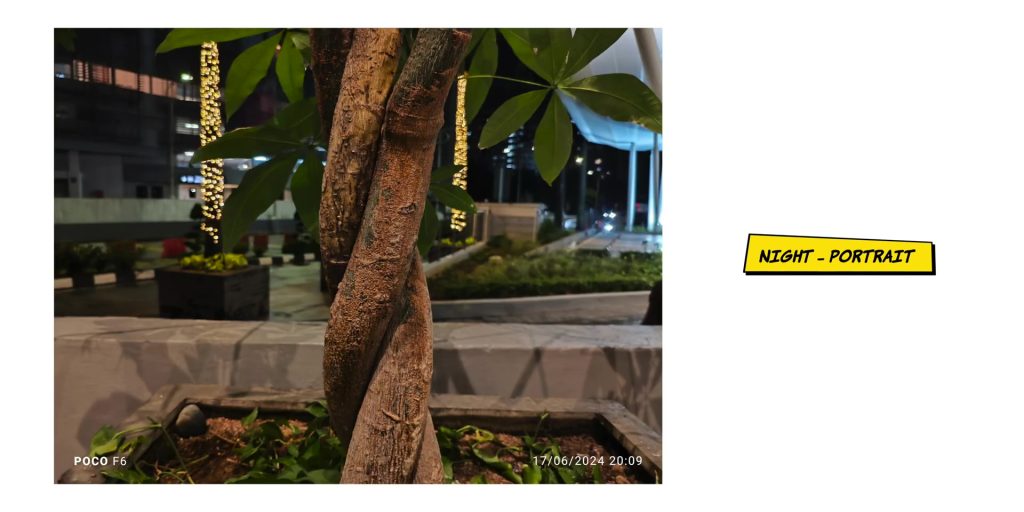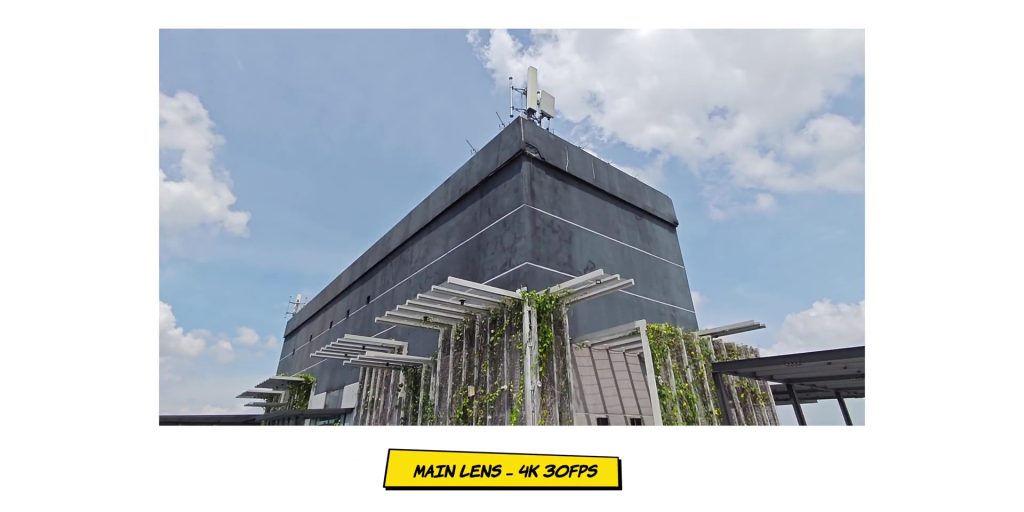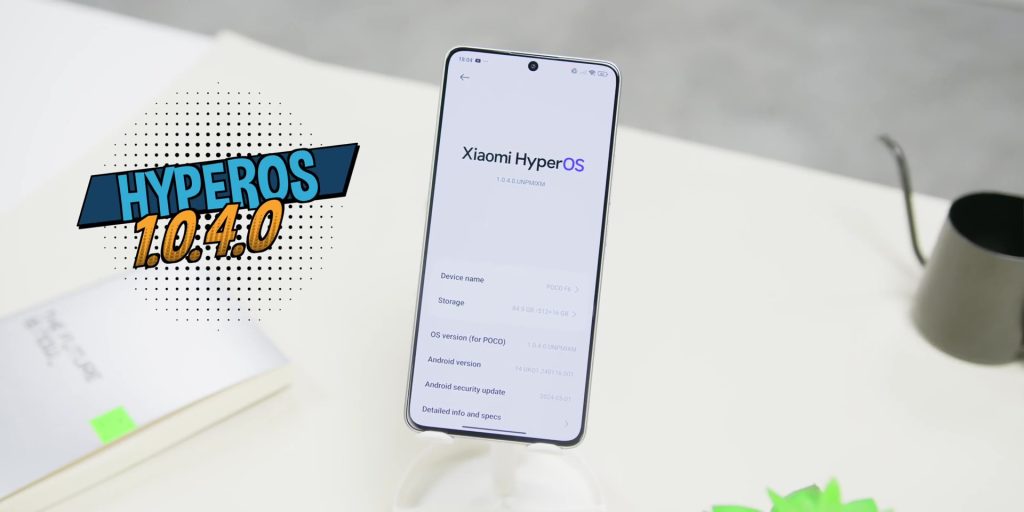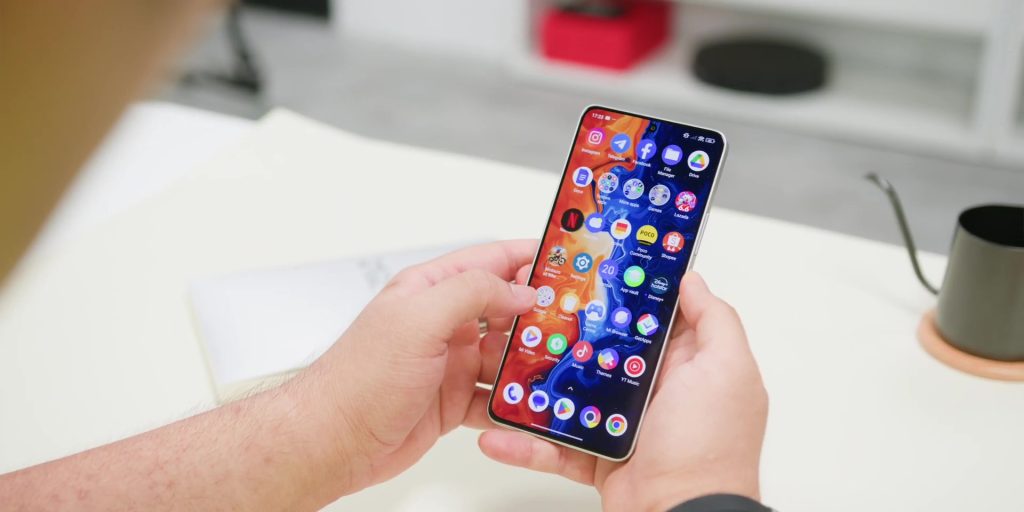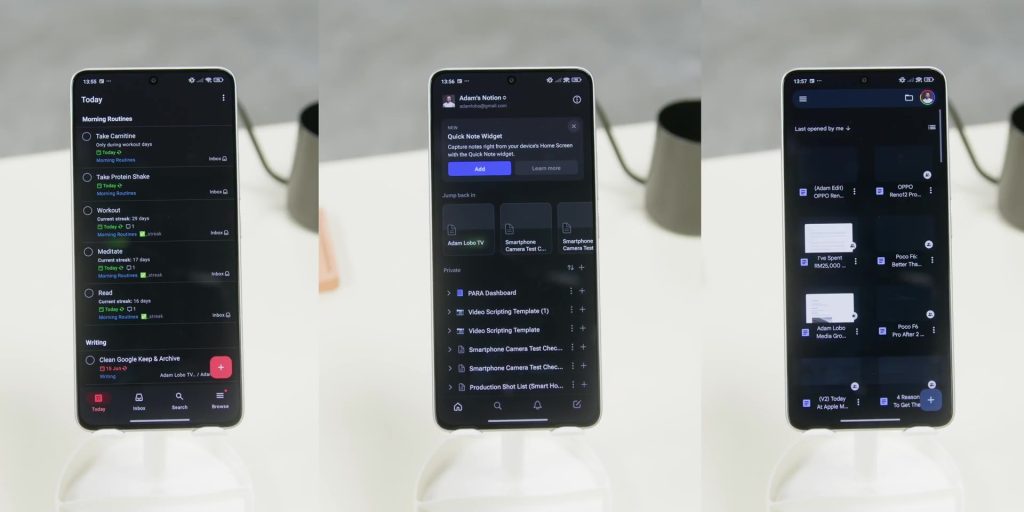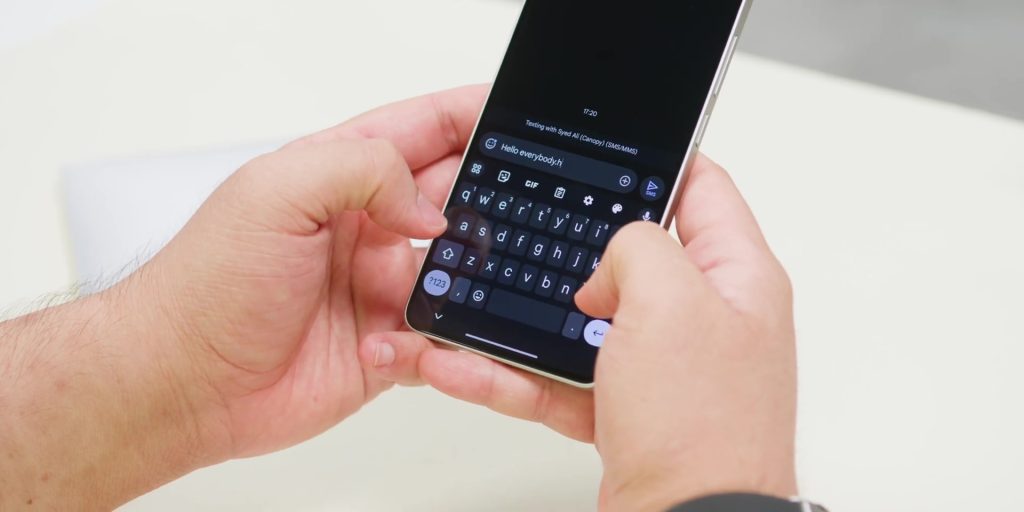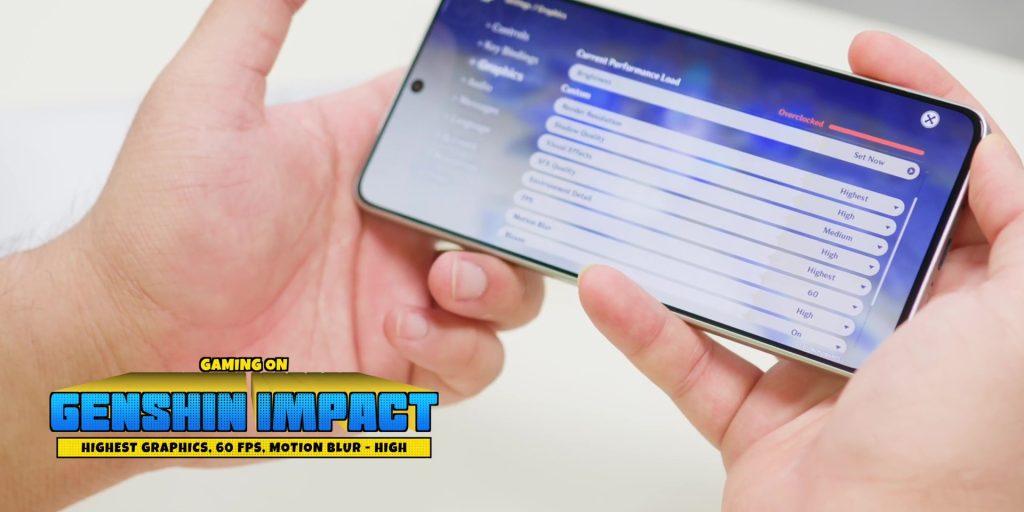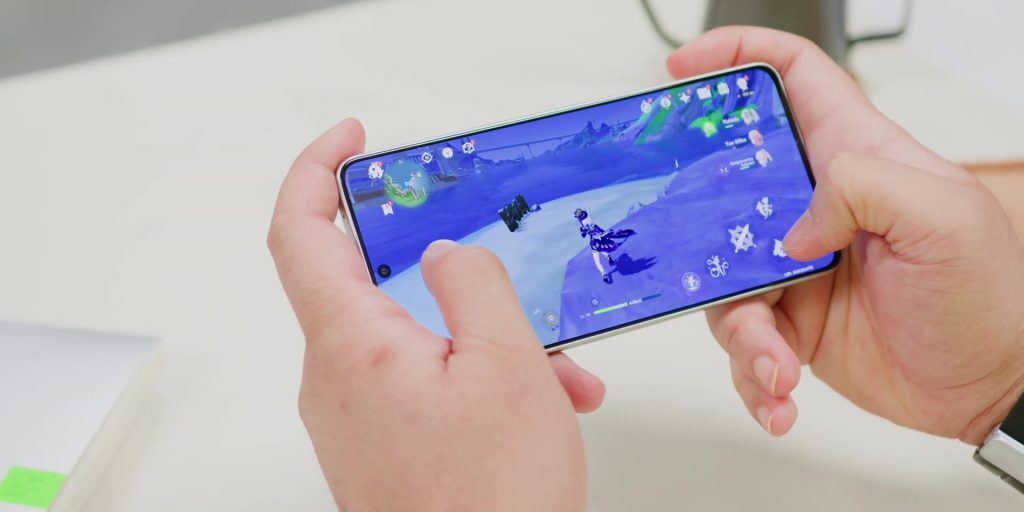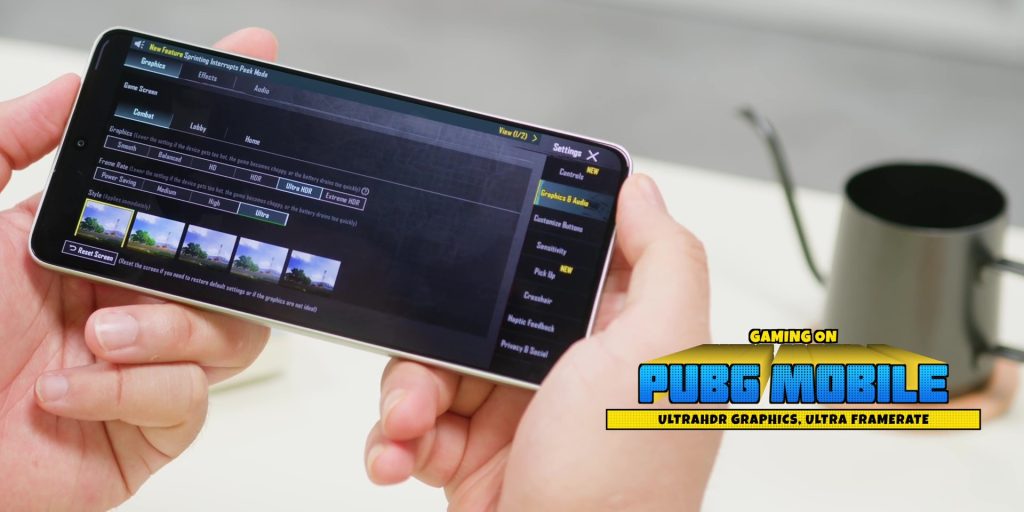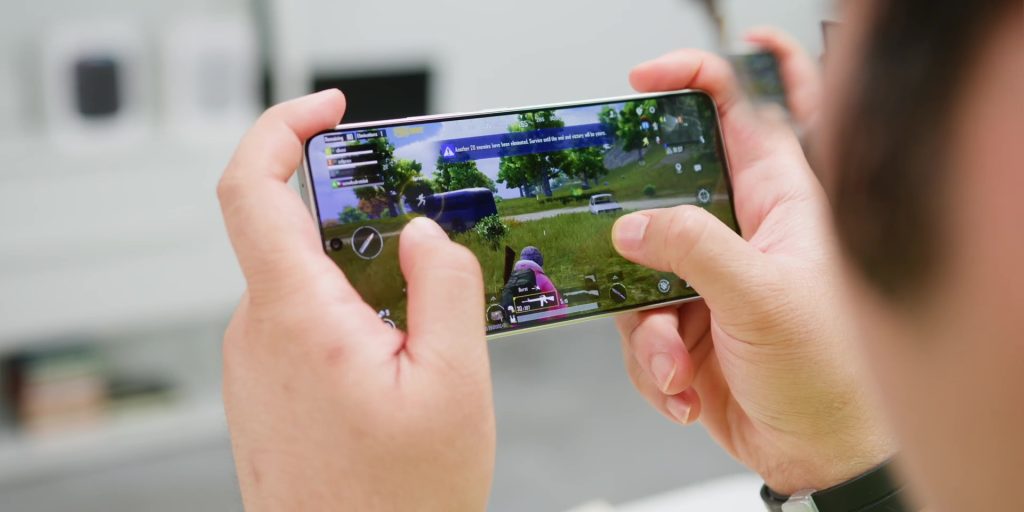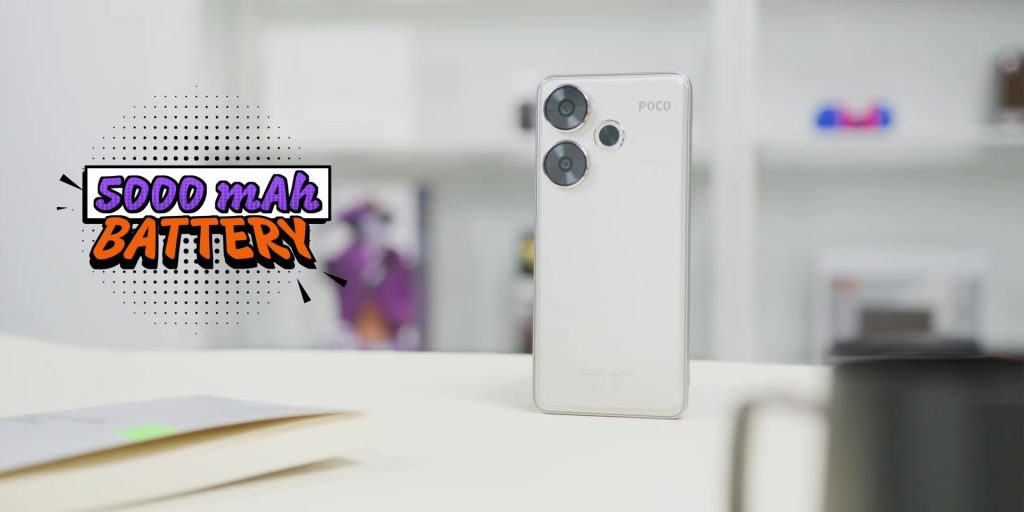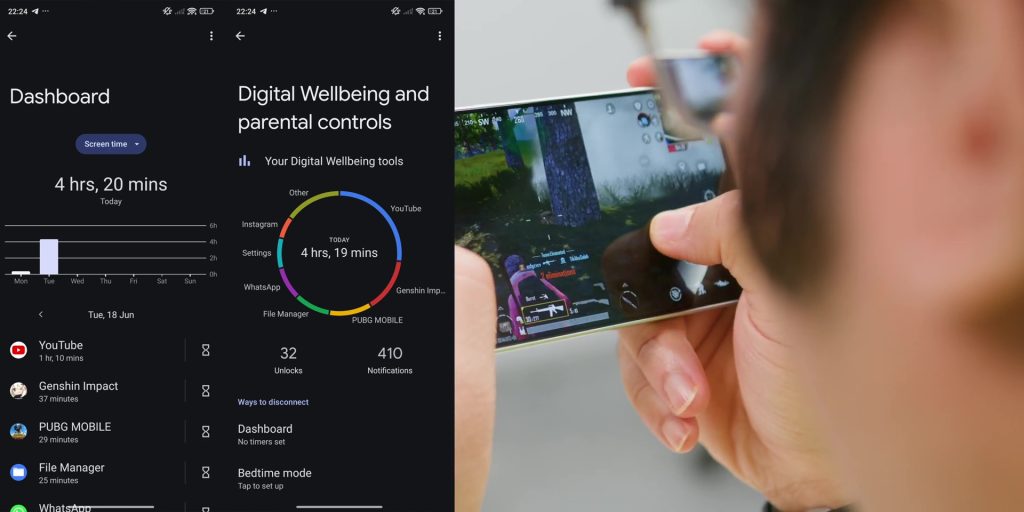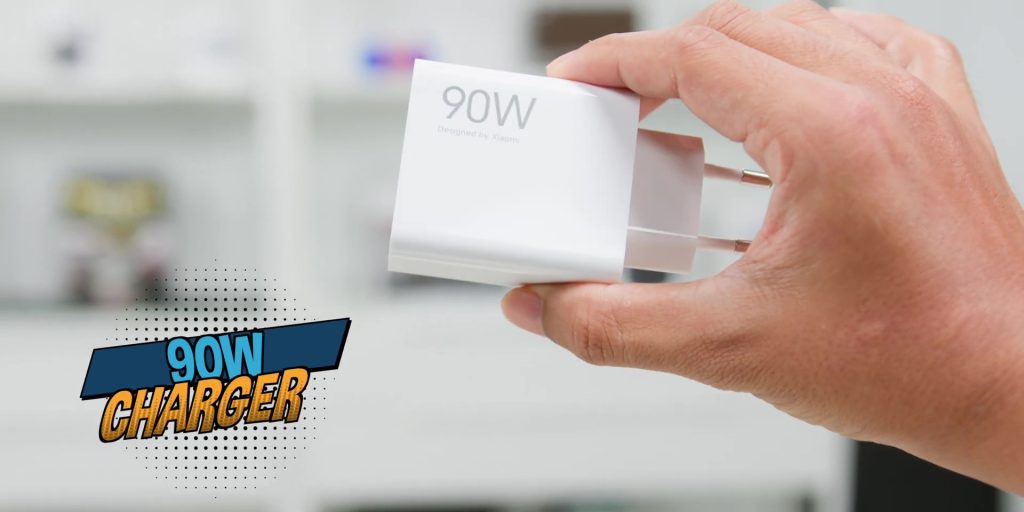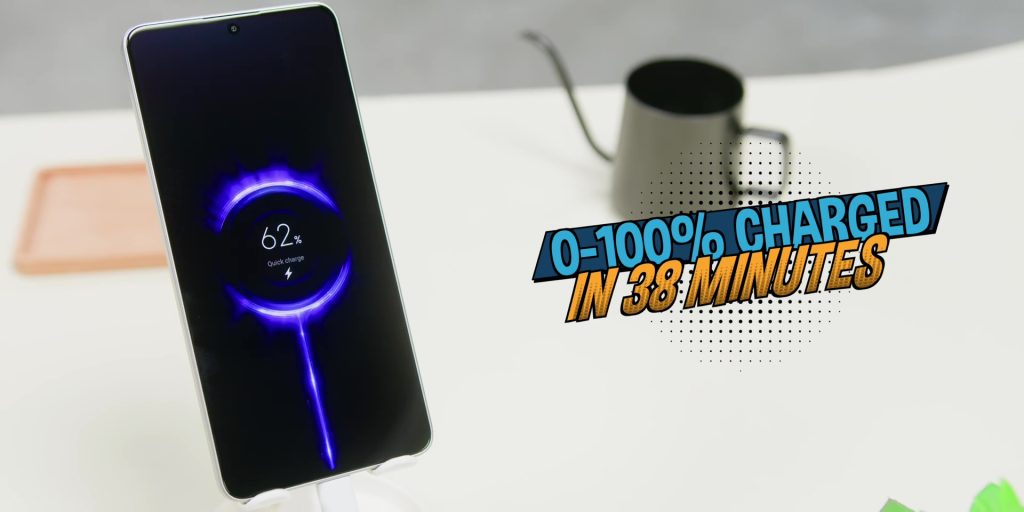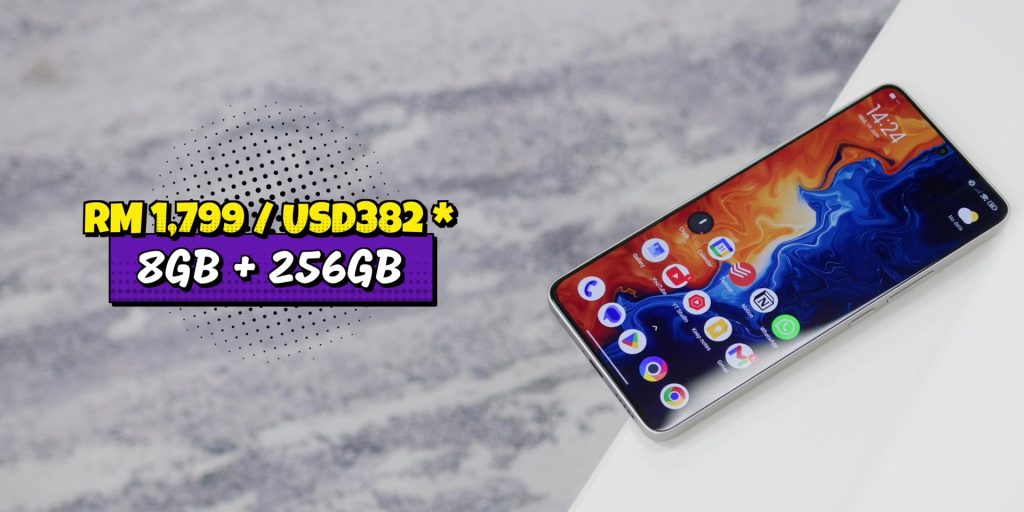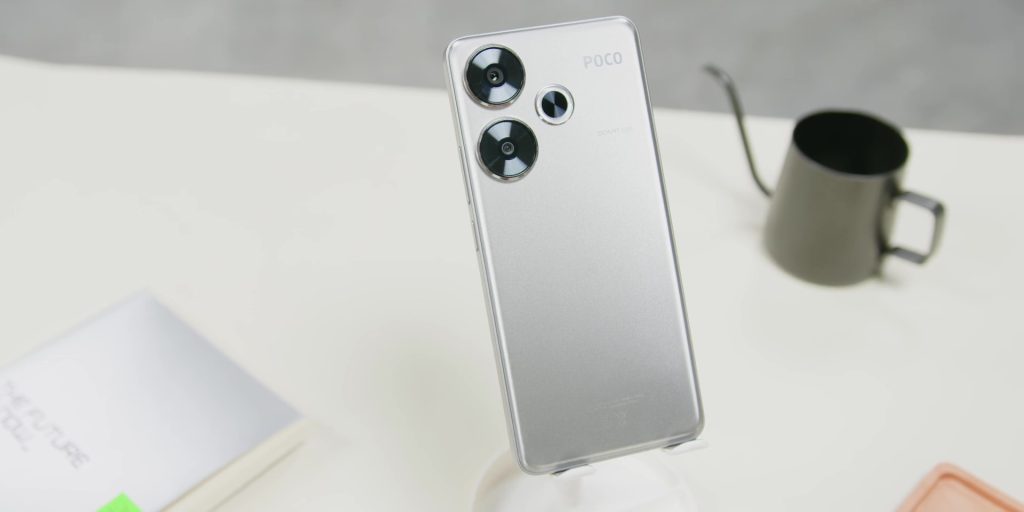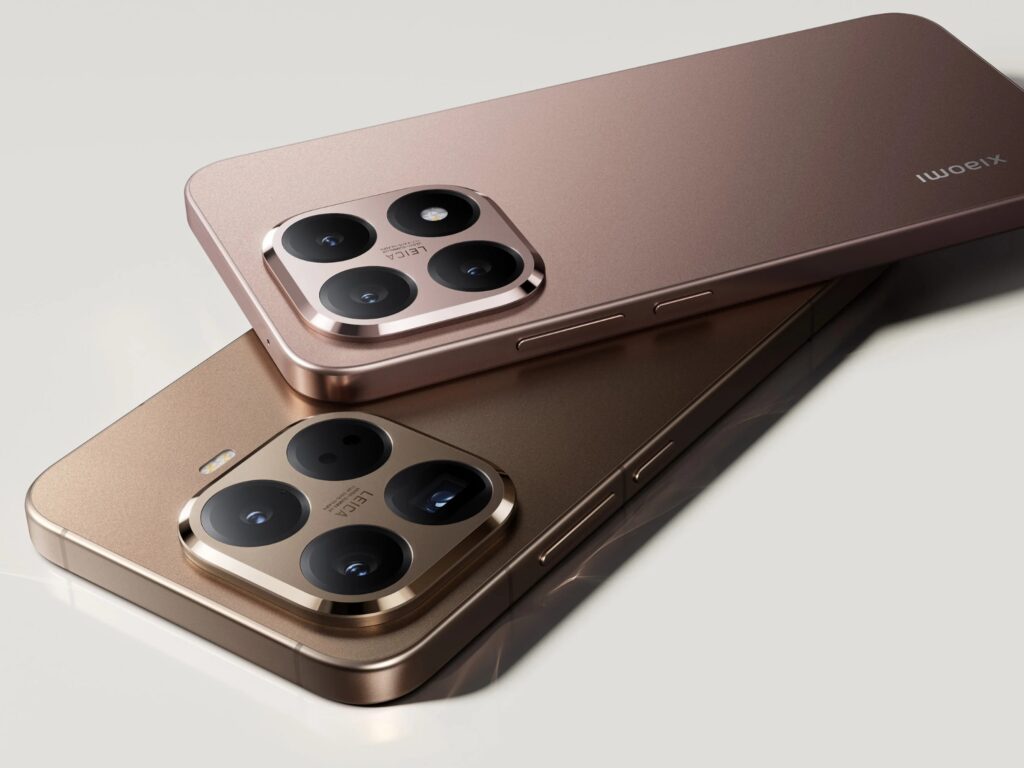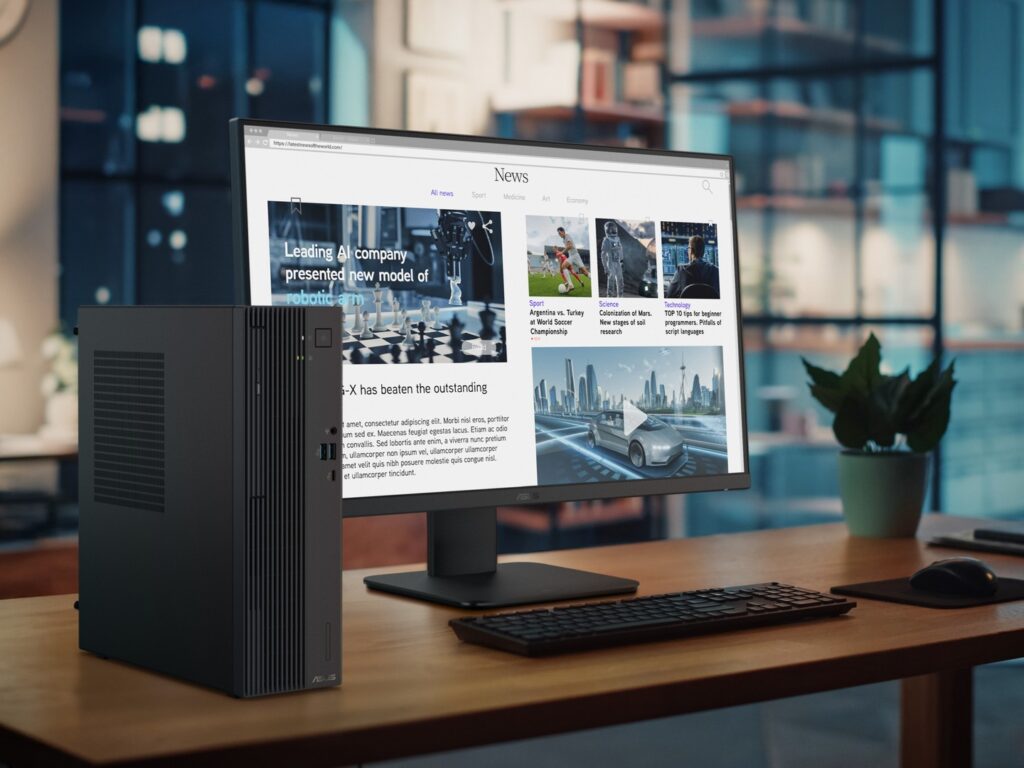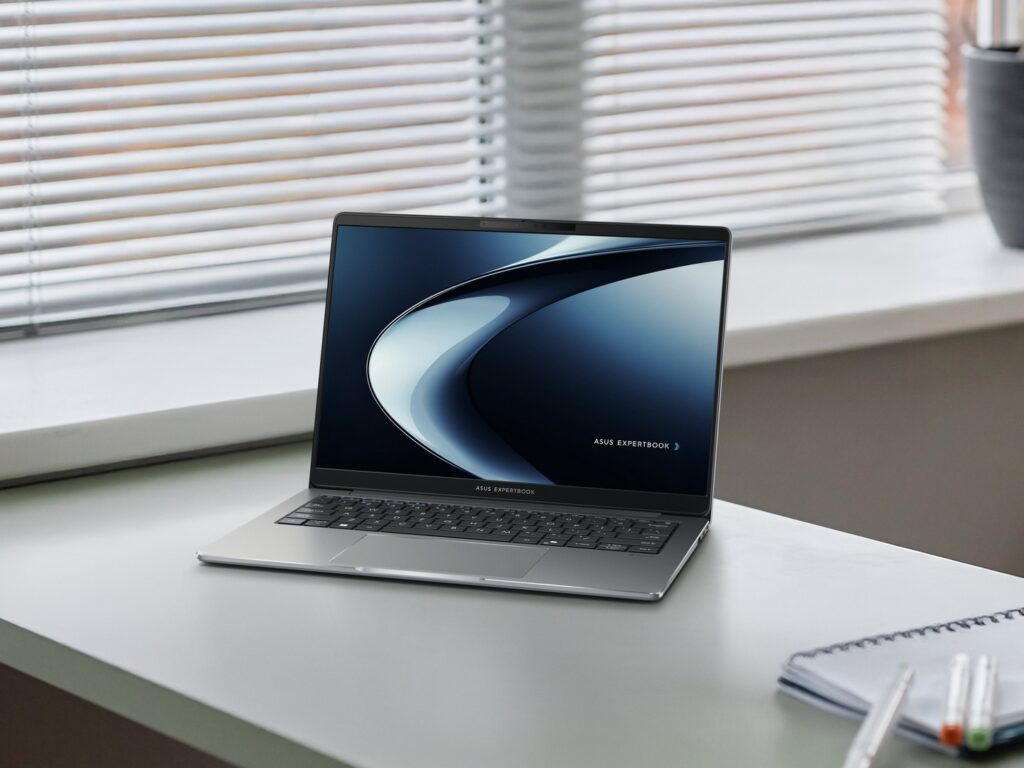This is the POCO F6. I’ve been using the phone for 2 weeks, and what’s interesting is that there are certain areas where it was better than the Pro. So how is it better, and what does it lack? Well, let’s find out together, shall we?
Design & Build
The overall design and build got me having some mixed feelings. It felt really good in the hands with that sort of frosted glittery plastic at the back, and the sides are also plastic in a matte finish, so the phone would not attract any fingerprints at all. It was quite light at about 179g, which was a huge plus.
But on the other hand, I honestly did not like the overall camera design, looking very similar to the Redmi Note 13 series. Now, I know some smarty pants out there are going to say, “Oh, in China, it’s actually called the Redmi Turbo Max Ultra Power 3000,” which I don’t care what it’s called in China because let’s just focus on this global variant, shall we?
Having this camera bump means that the phone was super wobbly if you wanted to type on the surface or rest it on a table, where the Pro was way better at that. The phone at the back honestly made it look, for lack of a better word, cheap because it looks like a lower-range Redmi or even a realme phone.
Now, before you say anything, I don’t have anything against Redmi phones because they are great, but POCO has always had its own thing and its own signature look, especially for a global variant, which the POCO F6 doesn’t really have. POCO calls this color Titanium, where it seems like it’s trying its best to blend between the iPhone and the S24 Ultra’s Titanium, which I again personally felt like they didn’t do a very good job at that.
Even though I do realize that I’m comparing between two very expensive flagships compared to this, POCO has always had its own thing, and this titanium finish did not really match with that.
The phone has an IP64 rating, which is higher than the Pro’s IP54, hence this phone was better when it comes to water-resistant capabilities, which was really great to know.
So yeah, a lot of mixed feelings when it comes to the phone’s design and build quality because I loved it for how it felt in the hands but not really feeling the look of the phone visually, if you get what I mean.
Display
The display is a 6.67-inch AMOLED display with the same max refresh rate up to 120Hz. You can leave it at default to adjust dynamically or force it to either 60 or 120Hz, but you can find the settings as usual in the display settings menu.
When idle, the screen will go down to 60Hz instead of 1Hz like how LTPO would be, but that would be expected for a phone within this amazing price range.
However, even though the screen brightness is not as high compared to the Pro, maximizing the nits value to 2,400 nits instead of 4,000 nits, honestly, during my usage, even when taking photos outdoors, I had no issues with the phone screen at all.
Another surprising advantage that this phone had over the Pro is the Corning Gorilla Glass Victus instead of Corning Gorilla Glass version 5 on the Pro. So yeah, weird but true. The pixel density is also lower than the Pro, but there’s nothing to be worried about as the screen on the phone was really still great.
Playback specification on Netflix was at Widevine L1 together with HDR 10 and Dolby Vision certified, so there are no compromises on the phone’s video playback capabilities, watching movies, or even videos on YouTube as well.
Instead of the side-mounted fingerprint sensor, POCO has decided to give this non-Pro variant the in-display fingerprint sensor because, well, it deserves it.
[easy-image-collage id=20915]
Cameras
As for cameras, it comes with only two cameras: a 50MP f1.6 main lens with OIS, a different sensor than the Pro, and an 8MP ultra-wide lens.
The so-called compromise compared to the Pro is the fact that it does not have a dedicated Macro camera, which was kind of useless based on my test on the Pro anyway, so not having it on the phone was fine by me. But in case you love taking macro shots, you’ll probably be bummed that it is missing over here.
However, another weird but good decision that POCO made on this non-Pro is to have a bigger 20MP front camera compared to only a 16MP on the Pro.
So the high-megapixel photos look great, and when it comes to the rear lenses, it has 2x zoom on this particular mode, but as usual, I wouldn’t use this unless you really need to get that high 50MP resolution detail.
The ultra-wide lenses look great, with great dynamic range and no softness at the edges.
The main lenses were amazing as expected, even though it’s a different sensor than the Pro, so was the digital 2x zoom, and you can zoom up to 10x, but of course, you will lose the quality of the image, so use it very wisely, especially only when you have a lot of light.
Portrait for objects was quite interesting because this particular image of the signage didn’t seem to capture the portrait mode properly, probably because it’s too far, but it was fine on other phones. So that is something for you guys to note, but not a huge deal.
If you’re taking photos in a closer range for objects in this portrait mode, it did turn out very well, even with complicated objects.
It did very well on this portrait mode for people, even ducks, but the edge detection for a turkey’s butt, especially on the edges, not so much.
The front camera also performed great, whether or not it’s for the regular selfie or the portrait selfie. It really shows how well the HDR capabilities, especially when it comes to the dynamic range in the background blurred area.
Switching over to nighttime, the ultra-wide lenses were just decent as they didn’t do a very good job when it comes to handling lamp post’s lights very well, and the overall image quality was not as good as the daytime shots unless you’re taking more of an indoor low light shot.
The main lenses did perform well, especially with no noticeable noise up to 2x zoom, but beyond that, there will be some quality degradation.
Portrait mode at night was really nice, beyond expectations, whether or not it’s on a person or even on objects too.
Selfie photos did also turn out great, especially on the portrait mode, similar to the front camera pictures during the day.
Video
[Sample video footages available in my YouTube video]
As for video, the ultra-wide cameras shoot up to 1080p, and that is to be expected since the Pro also has up to that recording resolution.
However, the main lenses record up to 4K 30 FPS compared to 8K 24 FPS on the POCO F6 Pro. It’s not like the 8K recording on the Pro was the best in the world because it doesn’t go beyond 24 FPS.
I still think that that’s the wrong frame rate because 30 FPS is the GOAT!
The quality of the stabilization for the ultra-wide lenses was great, and the main lenses were decent. There’s also an option to record in HDR mode as well, which is exactly what I’ve done in the main lenses video, where you can have some flexibility in post.
The rear lenses video quality at night was just decent at the ultra-wide lenses. The stabilization was not as good as it was on the daytime shots, with some jitters on the footage. The main lenses also did just okay for the stabilization, but the overall quality was obviously better than the ultra-wide lenses.
As for the front video camera, the video quality at night was not as good as the pictures, but overall decent with still great stabilization.
[Vlog test available in my YouTube video]
Software
As of the time of this review, the Xiaomi HyperOS version is at version 1.0.4 on Android 14, and POCO promises 3 years of Android updates and 4 years of security updates, so that was really nice to know.
Downloading apps and scrolling and navigating on the phone, especially loading apps, was fast thanks to the UFS 4.0 storage compared to the last year’s version 3.1, but the transfer speeds on this phone were really slow because it took me ages to copy all the photos and the videos that I took on the phone since it only has USB version 2.0, like the previous generation and the Pro version of this phone as well.
The Dark Mode optimization was perfect throughout apps like Todoist, Google Docs, and even Notion, but as usual, FB doesn’t do very well on this, where it is the same for other Android OS, which could be a hit or miss depending on the different software versions.
The typing experience was lovely, but the haptic feedback may not be best compared to phones like OnePlus or even Nothing phone series, but overall, it was a great phone to type on daily.
Now, I did mention in-depth all the details on what’s great about HyperOS on my POCO F6 Pro video, including the AI photo features where features like removing the subject from the background seem to work on the Pro but not on this non-Pro version. But other features like the AI expansion do work very well under the crop tool like the Pro, which did an amazing job. So check out that video in case you guys haven’t done so: https://youtu.be/fi_DV9EDRkA
Gaming
How is it gaming on this new Snapdragon 8s Gen 3, a more affordable version of the Snapdragon 8 Gen 3 chip?
Well, starting with Genshin Impact, the best gameplay was at the highest settings or the highest graphics at 60 fps with Motion Blur set to High, so yes, that was amazing to know because the game felt smooth without lag or any micro stuttering.
There was no serious heat or battery drain during 15 minutes of continued gameplay, and this was on the highest setting. However, if you’re a hardcore gamer who wants to enjoy a longer experience of gameplay, I would just recommend using it on Medium settings.
So yeah, believe it or not, the gaming experience on this phone felt like I was playing it on a Pro or even a flagship smartphone, which was very impressive indeed.
Then I tried PUBG Mobile, and it ran great at Ultra HDR graphics and Ultra frame rate as well. The texture of the game looked amazing, and here’s where the model also loads very fast too, probably due to its faster SSD speeds and of course, the new chipset as well.
The phone barely felt warm after about 20 minutes plus of continued gameplay with no battery drain issues at all.
Battery
The battery capacity on the POCO F6 was also at 5,000 mAh, but I really wanted to know whether the battery life would be better than the Pro because the Pro did not do very well in this department.
Well, the good news is that the battery life on this was way better, where based on my average test, I got an average of 4 and a half hours of screen-on time before heading to bed with still 21% battery left, so that was amazing to know.
Then compared to the Pro, this comes with a 90W charger inside of the box, which was better than last year’s 67W, and you can go from 0 to 100% battery in about 38 minutes, which was plenty fine looking on a day-to-day use.
Since it has a plastic back, there’s no wireless charging, which apparently many commented on how not having wireless charging is not an issue, so I guess we’ll leave it at that.
Conclusion
In conclusion, with a starting price of only RM1,799 (~USD382) for the 8GB of RAM and 256GB storage variant.
I think that the phone does hold very well, not only against other smartphones within this price range but even against the Pro sibling as well since there are some areas where it was indeed better than the Pro. Now, even though I’m not a fan of the overall design of the phone, the cameras, the display, and especially the battery, these things have my vote compared to the Pro.
Speaking of the Pro, check out my in-depth review of the POCO F6 Pro over here: https://youtu.be/fi_DV9EDRkA

